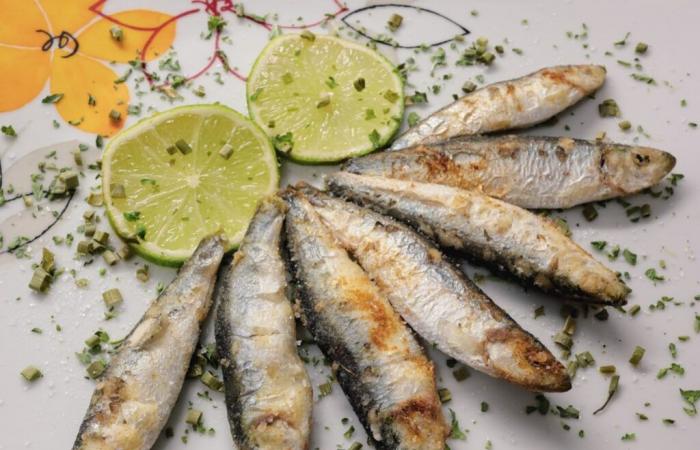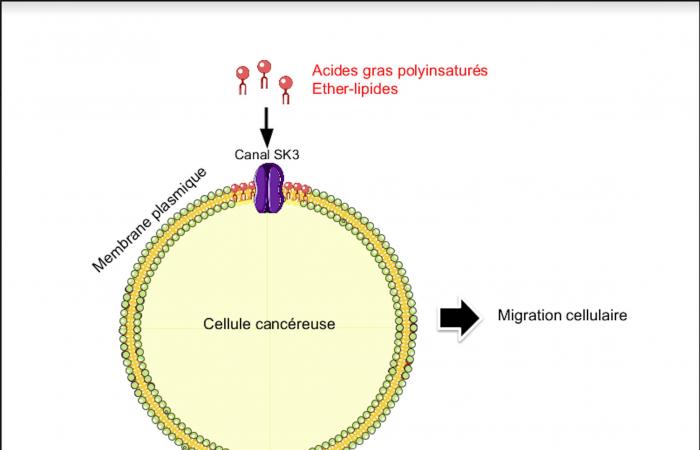Lipids from the marine environment show promise against cancer. Some, like omega-3 fatty acids present in foods such as fatty fish, could act as prevention. Others are sources of inspiration for developing therapeutic molecules.
The marine environment represents a very large unexploited diversity of flora and fauna, and therefore a high probability of discovery of new molecules for therapeutic purposes. It notably includes molecules which have shown strong anticancer potential.
We could cite cytarabine inspired by molecules from a Caribbean sponge (Cryptotethya crypta) and used in certain forms of leukemia or, in the case of lipids of marine origin, miltefosine (which is indicated in the treatment of skin metastases from breast cancer).
The marine environment is the major source of lipids (commonly called “fats”) known for their inhibitory effects on tumor development. These lipids of marine origin can be used according to two complementary approaches. The first approach is nutritional, particularly with food. The second approach is based on the development of lipid anticancer agents whose molecular structures come from or are inspired by the marine environment.
Target cancer cells or the tumor environment
Whatever the approaches, these lipids of marine origin will act on specific targets of tumor cells or the tumor microenvironment. The objective is to intervene globally on the entire organism of the sick person as well as on the tumor itself in order to prevent or inhibit tumor growth, to sensitize tumor cells to anticancer treatments ( chemotherapy, radiotherapy and immunotherapy) and to slow down the undernutrition linked to cancer.
By influencing certain stages of the development and progression of tumors, dietary factors stimulate or inhibit their formation. Thus, the appearance of several types of cancer could be delayed if the intake of food components that stimulate tumor development was restricted in the diet or, conversely, if factors with inhibitory activity were provided.
Sardines, mackerel and other fatty fish, marine sources of omega-3
Lipids of marine origin include:
– omega-3 polyunsaturated fatty acids provided by food. They are present in fatty fish such as sardines, mackerel and herring.
– ether lipids found for example in shark liver oil and scallops.
These different types of lipids (polyunsaturated fatty acids of phospholipids and ether-lipids) are constituents of cell membranes, particularly cancer cells. In cancer cells, these lipids and their derivatives can also act on the transmission of signals involved in tumor development.
The molecular and cellular mechanisms by which these lipids act on tumor development, growth, migration and invasion of cancer cells, as well as the response to treatments are currently being investigated, particularly in our Inserm joint research unit – University of Tours, UMR 1069 “Niche, Nutrition, Cancer and metabolism Oxidative (N2COx)”.
Breast cancer, prostate cancer, leukemia: anti-tumor fatty acids
In recent years we have identified several lipids or classes of lipids of marine origin which exert anti- or pro-tumoral activities. These lipids act on the cancer cell by incorporating themselves into the membranes where the target proteins of these lipids are located (in particular ion channels).
In prostate cancer, we have identified, among these lipids, omega-3 (such as EPA or eicosapentaenoic acid) whose presence is associated with a lower aggressiveness of prostate cancer.
In cancer cells, omega-3 EPA blocks a complex process which involves a channel called the SK3 channel. However, the SK3 channel promotes – among other things – the migration of cancer cells, this migration being responsible for their aggressiveness and the development of metastases.
Likewise, in breast cancer, low concentrations of this EPA omega-3 but also of another omega-3 nicknamed DHA (for docosahexaenoic acid) are associated with more aggressive clinical situations such as multifocal breast cancer (which corresponds to the presence of several tumors in the same breast), inflammatory breast cancer or breast cancer with bone metastases in premenopausal women.
In the case of leukemia, we have also demonstrated that the omega-3 DHA and EPA exert anti-leukemic activity. This resulted in a clinical protocol across multiple research centers that shows these fatty acids can be safely administered to patients newly diagnosed with leukemia at high risk, without compromising chemotherapy.
Furthermore, work in animals, which needs to be confirmed in humans, suggests that omega-3s could also delay undernutrition induced by cancer.
In the three types of cancers mentioned, the presence of the omega-3 EPA and DHA is associated with less aggressive cancers because these lipids exert an anti-tumor action.
Tomorrow, omega-3 supplementation to complement treatments?
The impact of these omega-3s remains to be explored at the molecular level. But this suggests the whole point of nutritional supplementation for prevention cancers. It is in this context that our team showed that dietary supplementation with omega-3 DHA during chemotherapy increases the survival of people suffering from metastatic breast cancer.
We have also identified categories of lipids produced by the body (alkyl ether lipids and alkenyl lipids or plasmalogens) for which it is generally accepted that they are found in greater quantities. quantity in tumors than in non-tumor tissues. These lipids are contained in the membranes of cells, next to the SK3 channel, which we have already discussed, which plays a role in the migration of cancer cells.
We recently described for the first time in detail the role of these two classes of endogenous lipids. Alkenyl lipids limit the aggressiveness of cancer cells (by blocking the activity of the SK3 channel) while alkyl lipids exert an opposite action (by activating the SK3 channel).
This work therefore provides avenues for combating the progression of cancer cells which contain these two classes of endogenous lipids in greater quantities than in healthy tissues.
This would involve favoring the category of lipids (alkenyl lipids) which limits the aggressiveness of cancer cells. These lipids, present in seafood, could ultimately be produced synthetically to be included in the composition of curative drugs.
Synthetic ether-lipids such as Ohmline have also shown their therapeutic interest. Indeed, the modalities of action of this lipid which has just been marketed by the company Lifesome Therapeutics make it possible to reduce the development of metastases and to modify the response to therapeutic antibodies (also called monoclonal antibodies). This synthetic lipid reduces the activity of the SK3 channel involved in the migration of cancer cells.
This lipid has thus been proposed as an adjuvant to chemotherapy in the prevention of neuropathies (this is pain localized in certain nerves) induced by certain chemotherapies.
Increasing the potential of seafood against cancer
Thus, a continuum is created ranging from the models offered by marine products to therapeutic applications in cancers.
This research, which is part of the research of the “Marine molecules, metabolism and cancer of the Grand-Ouest cancer center” network, should increase the already recognized potential of seafood in the field of cancer and make it possible to offer them for prevention as well as to develop new therapeutic approaches.
And we already have very encouraging data in the prevention of cancers by the different families of lipids of marine or synthetic origins which can be proposed as sensitization agents for chemotherapy, radiotherapy and therapeutic antibodies.
This article is the result of research carried out by the entire Niche Nutrition Cancer & Oxidative metabolism (N2COx) team at the University of Tours.







